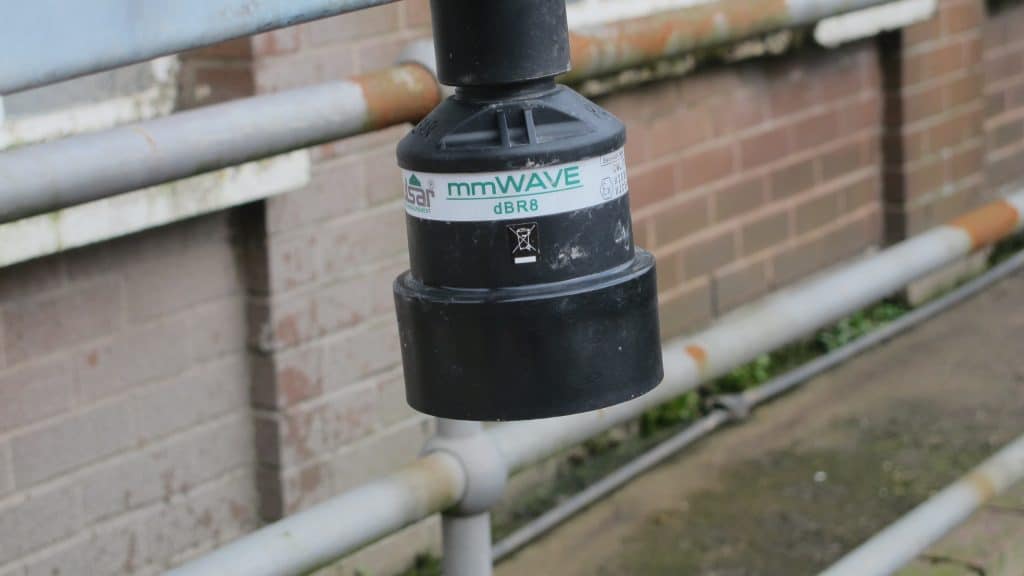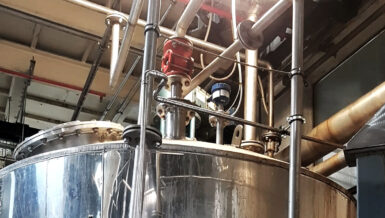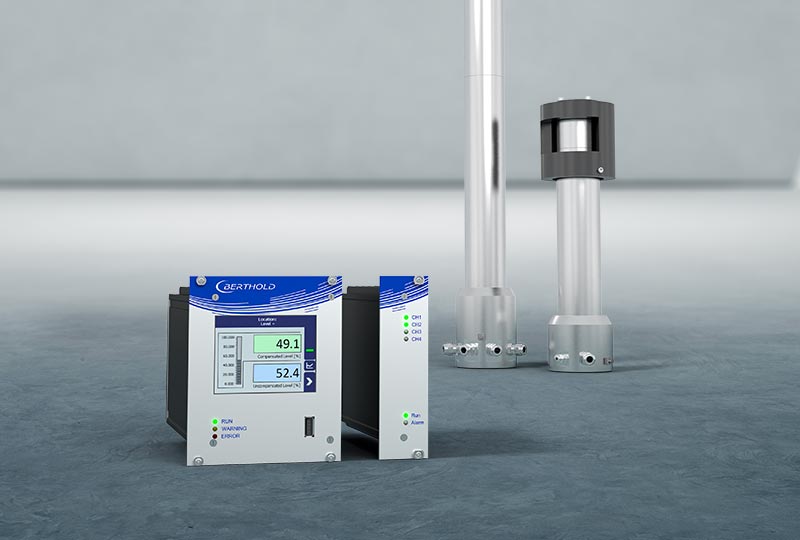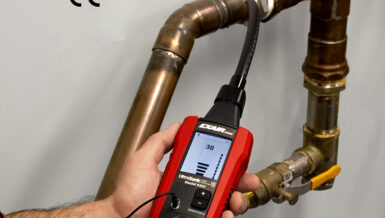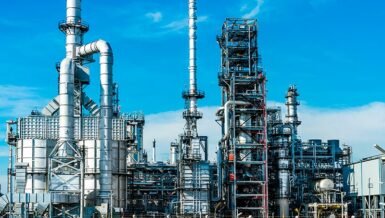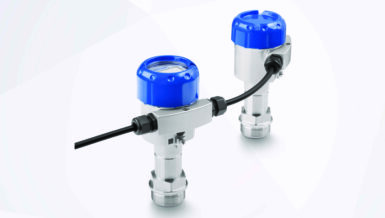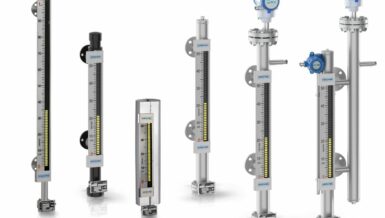The biggest challenge then was ‘false echoes,’ which is where signals from hard elements that surrounded the measuring sound such as stanchions, struts or stirrers interfere with and overwhelm the ‘true echo.’
So, it is no secret that ultrasonic measurement has been around for decades. But it required a mass of investment. Now, advancements in technology have meant that ultrasonic measurement has remained the top choice for water utilities across the UK and worldwide industry sectors. The latest systems and infrastructure improvements have been built specifically around the sophisticated control, security and communications that are demanded by our UK water industry.
Ultrasonic measurement devices have evolved to be much more than that, from asset management and predictive maintenance to TOTEX and event duration management – todays industry is demanding more. These days, your average ultrasonic systems are more than just level sensors, they are small pump station controllers.
Ultrasonic measurement operates by exciting a piezo-electric crystal to emit a pulse of ultrasound. The sound reflects off objects and the return ‘echoes’ re-excite the crystal. The time taken for the signal to return is related to the distance of the reflecting object. Advancements in technology allow echoes from fixed objects within the path of the sound to be disregarded, and the true echo can be identified. Meaning that now, there are very few applications where this technology won’t work.
The non-contacting nature of this technology means no moving parts, so no maintenance, making it a firm favourite within our UK water industry and various other sectors across the globe. Now, almost all wet wells are fitted with non-contacting ultrasonic devices, and level measurement isn’t all that they are restricted too; they are widely used to pump control, differential measurement, and volume measurement.
Of course, when a technology has been around for as long as ultrasonic measurement, there are bound to be some myths and rumours bubbling under the surface. One of the latest being that radar measurement is superior to ultrasonic measurement. While radar does have its place and advantages in certain situations; the advancement of digital signal processing, low voltage and high acoustic power output in ultrasonic transducers, has meant that nearly 95% of all applications can be solved with ultrasonic measurement. Using an ultrasonic with high acoustic power can give a robust and reliable signal return from a turbulent and foamy surface.
What are the benefits of ultrasonic?
Firstly, the technology is a well-proven, well understood measurement technique and is consistently and routinely used throughout industries all over the globe. You can rely on ultrasonic measurement to give you accurate and reliable readings each and every time, aside from its consistency, there are a huge number of standard control routines providing you with an outstanding level of control.
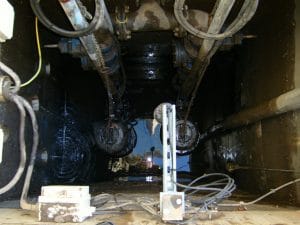
Today’s market is more diverse, and we are seeing customers demanding more specific solutions to their measurement requirements. ‘Low power, low power, low power…’ today’s businesses are constantly being reminded to reduce their power consumption and have their carbon footprint at the forefront of their minds. There are low power, loop or battery powered operating ultrasonic systems that have been developed to provide a solution to just that. These systems provide ideal answers to the issues of monitoring levels in remote locations and reducing power consumption on site. Advances in power management technology mean that the battery life of these systems is measured in years – something that has been unachievable in non-contacting systems over recent years.
Plain and simple, a non-contacting system does an upstanding job, deriving distance by firing a signal and listening for the return echo. But now, with millions of pounds of research and development, tens of thousands of installations and a huge advancement in technology, ultrasonic measurement remains the foundation stone of process control and measurement.
What is radar?
Non-contacting radar technology comes in two different types, pulsed and Frequency Modulated Continuous Wave (FMCW). Both technologies work by emitting radio frequency energy and measuring the time it takes for a signal to return from a target with a significantly higher dielectric constant than air.
The key different between the two types of radar measurement is that pulsed radar emits a series of radio frequency pulses and measures the time it takes for the signal to return from the target to the emitter. A challenge when at the speed of light, the signal will return in a fraction of a microsecond. Whereas, FMCW measure time of flight, but transmits continuously, constantly varying the frequency of the signal. The frequency of the returning signal is compared to the signal being emitted at that moment using a mathematical technique called Fast Fourier Transform (FFT). The difference between the two corresponding to the time the signal has taken to return. FMCW is said to be the more accurate of the two because of its narrower bean angle and in most cases a stronger signal.
How are radar and ultrasonic technologies different?
There really is no difference in control and measurement functionality with radar and ultrasonic measurement. The only major factor in determining which technology to use is the measurement type. You can probably start off by assuming that ultrasonic measurement will solve your problem. Even in the cluttered busy wet wells we see in everyday sewage treatment applications.
Radar echo strength is also related to the dielectric constant of the reflecting object. If you are measuring something with a low dielectric constant and there are obstructions with a high dielectric constant, there will be some serious measurement problems. Ultrasonic is only concerned with the surface texture of the object for its ability to reflect sound, rather than what the object is made from.
When should I consider radar technology?
- Longer Range Open Channel Flow MCERT Applications
MCERT schemes are independent schemes designed to provide a framework for businesses to meet quality requirements. Under class 1 certification, the first three most accurate devices listed are ultrasonic, with a 0.04% combined accuracy, compared to a radar on the same scheme having a class 2 certification with a combined accuracy of 0.22%. However, radar does have its advantages on those applications which are more than a few meters of measurement range.
- High Temperature Applications
Where the surface of the substance being measured is hot, it can create a temperature gradient above the surface. This will affect the speed of sound and creates an inconsistent ultrasonic signal, which effectively will reduce the accuracy of measurement.
- Acoustic Noise Interface
Electrical noise interference can be ignored by using low voltage but high acoustic power ultrasonic measurement however, sometimes acoustic noise can interfere with the signal. By using a radar sensor for these applications, it can eliminate this rare occurrence.
- Foamy Applications
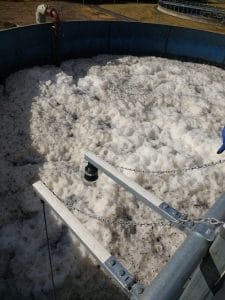
Radar measurement will produce more stable results than an ultrasonic sensor with limited acoustic power on foamy applications. This is because the foam interrupts the signal of the ultrasonic transducer; you can still get around this issue with ultrasonic measurement by using a sensor with high acoustic power. However, one thing that both technologies have in common, is that it is virtually impossible for them to see through the foam to the liquid surface.
- Dosing Plants and IBC’s
One clear advantage of radar is it can read through the container wall. This is particularly useful is chemical dosing plants where chemicals are supplied in plastic IBC tanks. The low dielectric constant of plastic means that you can accurately measure usage and stock levels, without having to introduce a new process connection to the container.
- Digesters
One of the long-standing issues with ultrasonic measurement is that it has struggled with the inability to measure reliably within the methane-rich, elevated temperature and pressurised environment of a sludge digester. With businesses all over the globe making a huge effort to be more environmentally friendly, with bio-gas generation; radar measurement offers an easy way to measure levels within the digesters and with a standard set of communications and protocols that communicate with the rest of the site.
Conclusion
The simple answer is, whatever you are measuring or trying to achieve you can be rest-assured that ultrasonic measurement will achieve what you want it too. However, for the small 5% of applications outlined above, radar will solve your problem. One thing that will be essential to the outcome of your measurement in ensuring you choose a controller that is retrofittable with both technologies. If suddenly your application changes or the conditions of the process change, and you need to swap the one technology for the other, you need to ensure you have a control system that enables you to do just that.
Having a control system with the flexibility for both technologies ensures that these decisions can be made quickly, without having to retrain your engineers, the expense of installing a new control system and service on on-site maintenance is made much simpler, you’ll only need one set of control spares meaning only one set of instructions to learn – but you’ll have the ability to provide a solution quickly and effectively.



